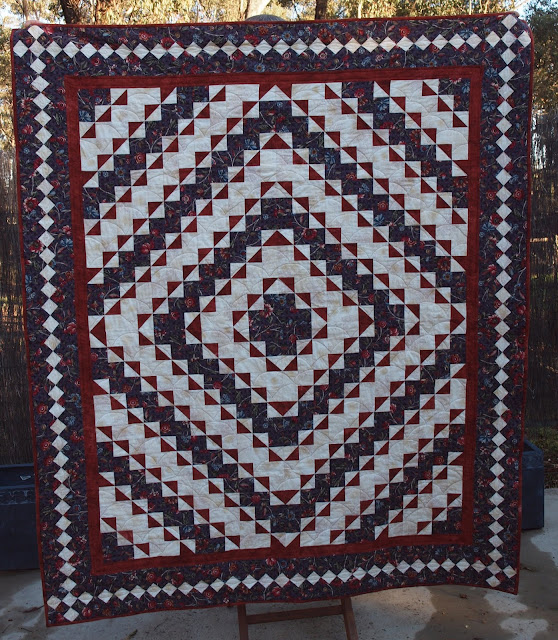This quilt went together surprisingly fast! Rotary cutting and strip piecing just made it so very easy.
 |
| 9 Patch Illusion quilt hanging at the Kilmore Quilters Quilt Show in Oct 2019. |
 |
| Backing fabric. |
I had to wait until there was a quilt show to hang this quilt so that I could get it all in the photo. It turned into an absolute delight to make and quilt.
For the quilting, I kept it very simple. Cross hatching through the 9 patch blocks and feathers in the borders. I used Superior Threads #100wt rayon for the quilting. I did not want the quilting to overpower the optical illusion of the 'waves' over the quilt top.
The hardest part of the whole quilt was choosing just 2 fabrics that would play well together because I did not want a plain white background. I loved the dark teal as soon as I saw it, but the initial background I had chosen was unanimously rejected by those who live in this house with me. Back to the shops to find another background.
In the craziness that only Quilters can understand, there were 3 shops and approx 200kms of driving involved in the front and back fabric selections, which gave me 3 very nice days out!
 |
| Starting with in the ditch quilting.. |
 |
| Feather quilting around the outside border. |
Sometimes simplicity is what you need to keep the mojo happening and this quilt did "soothe my soul" by giving me a fun project with terrific results.
The pattern for the quilt can be found here: Rolling Waves Pattern published by McCall's Quilting













































